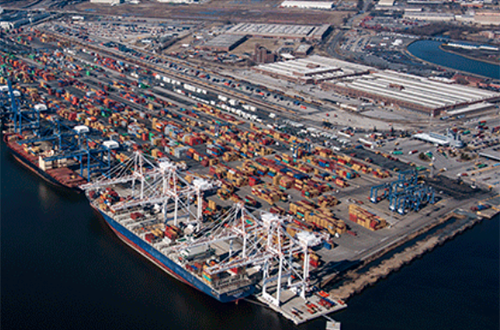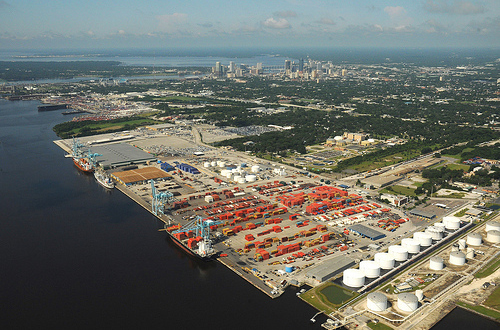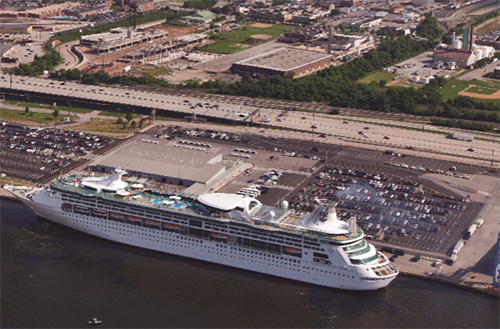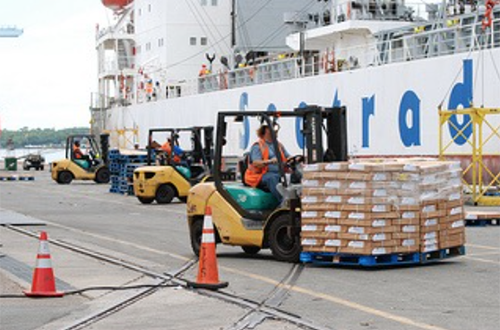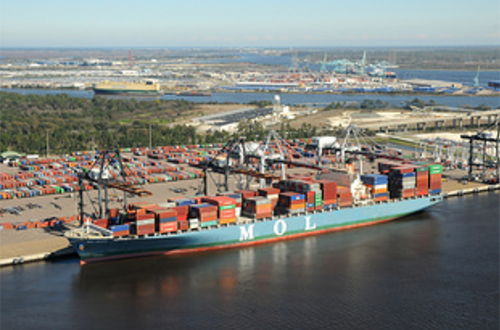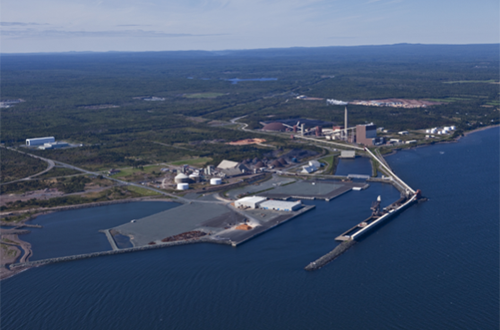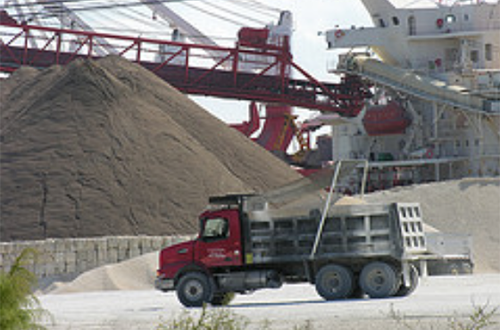Services
Martin Associates provides personalized consulting services to the maritime and aviation industries including the following:
It is our mission at Martin Associates to bring you the most up-to-date research and statistical analysis to help guide your business in the proper direction.
ECONOMIC IMPACT STUDIES
Over the last 30 years, Martin Associates has developed more than 600 economic impact studies for ports, port systems and airports throughout the U.S. and Canada. The economic impact methodology used by Martin Associates is based on detailed assessments of each individual port or airport operations and has gained widespread acceptance throughout these industry sectors. Because of this level of detail, these impact analyses are highly defensible and the direct economic impacts can be traced to the individual firm. Economic Impact Studies have become integral planning tools for our port and airport clients in addition to the traditional public relation use of impact studies.
Martin Associate’s™ economic impact studies can be categorized as seaport, cruise, airport, shipyard, waterfront real estate development, and ferry studies.
Seaport Impact Studies
The Martin Associates Seaport Model is used in economic impact studies as a tool to estimate the impact of future activity by using tonnage forecasts and revenue and financial performance scenarios developed for each of the ports. It is also possible to evaluate specific terminal activity such as new construction or the addition of a new carrier, as well as navigational projects such as channel deepening and channel depth maintenance. The model is able to test the sensitivity of impact to changes in factors such as tonnage levels, commodity mix, vessel size, labor productivity and work rules, new terminal development, inland modal distribution (i.e. double stack service versus conventional rail service),changes in the ports commodity specific hinterland (origin and destination markets as well as discretionary cargo).
Our impact studies have been a continued featured topic at many of the American Association of Port Authorities conferences. The impact models have been subject to review by the U.S. Council of Economic Advisors and the Federal Reserve Board. The seaport impact model has been used to assess the economic impacts of the West Coast port shutdown in 2002, the impacts of the imposition of the Section 201 Steel Import Quotas, and the potential impact of port closures due to national security issues. As part of the 2014-2015 labor contract negotiations, Martin Associates provided the economic impact assessment of potential port shutdowns and slowdowns. Martin Associates has developed the economic impact analysis and model for the Great Lakes/St. Lawrence Seaway Transportation System, which demonstrates the economic impacts of the system by state and province and for 36 individual U.S. and Canadian ports. Martin Associates also completed the economic impact study of the U.S. Coastal Seaports, 2011, 2014 and 2018 for the American Association of Port Authorities.
Cruise Impact Analyses
Martin Associates has developed cruise economic impact models for several ports throughout the U.S. The impact analysis includes a detailed survey of embarking passengers and crew from several of the key cruise services as well as the development of detailed disbursement accounts for specific type of cruise ship calling at the ports. These expenditure profiles are developed for home port cruises as well as ports of call cruises.
The cruise impact model can be used to test the sensitivity of the impacts due to vessel size, routing, percent of fly-in passengers, and the number of nights stayed pre and post cruise, etc. Cruise models are also used with cargo models to evaluate alternative uses of waterfront land for cargo or cruise terminal development. This methodology is used to estimate the impact of cruise business at the Ports of Miami, Port Everglades, Tampa, Port Canaveral, Jacksonville, Baltimore, Boston, Los Angeles, Seattle, San Francisco, Norfolk, Galveston, Houston, and Philadelphia. Martin Associates also provides the economic impact consulting for Disney Cruises.
We also use a derivation of this model to assess the impacts of ferry operations, including the Washington State Ferry operations, as well as San Francisco Bay ferry operations and the impact of potential ferry operations on the Great Lakes, and Connecticut to New York ferry operations.
Fishing Impacts
Martin Associates has developed a detailed model of commercial fishing activity that provides an estimate of the economic impacts generated by commercial fishing activity. The model is sensitive to the various fleets at a given port, such as crabbers, factory trawlers, seiners, long liners, etc. This model has been used to estimate the economic impacts of commercial fishing activity at the Port of Seattle’s Fisherman’s Terminal and Elliott Bay and the Maritime Industrial Center, the Port of San Francisco, the Port of Los Angeles, the Port of Galveston, Port LaVaca/Port Comfort, the Port of Brownsville, Port of Bellingham, Grays Harbor, Port Townsend, Port of Chinook/Ilwaco, Port of Victoria, New Bedford (MA) and the Port of Boston. These models are used to assess the impacts of changes in the composition of the commercial fishing fleet as well as the impact of changes in commercial fishing regulations and the impact of changes in alternative uses for commercial fishing fleet slips and berths.
Impacts of Recreational Boating
Martin Associates has developed a model to measure the impacts of recreational boating. The model not only addresses the local employment at marinas and support services at the marinas, but also the impact of local purchases to support the recreational boating operations. These include repairs and supplies, retail purchases as well as storage. We have developed economic impact studies for the marinas owned by the Port of San Francisco, the Port of Tacoma, the Port of Seattle, the Port of Everett, the Port of Olympia, Port of Los Angeles, Port of Bellingham (WA), the Port of New Bedford (MA), Chinook (WA), the Port of Grays Harbor (WA), and Port Townsend (WA).
Shipyard Impact Analysis
Martin Associates has developed detailed ship building and repair economic impact models that are used to measure the jobs, revenue, income and tax impacts of shipyard activity, by type of activity –new building, ship and barge repair, modular construction, military versus cargo versus passenger ships, etc. These models have been developed for shipyards at the Port of Portland, Port of Tampa, Port of Seattle, Port of San Francisco, Port of Erie and the Port of Philadelphia. We have used the shipyard model to estimate the economic impacts of the opening of the Meyer Werft Yard in Philadelphia, as well as to monitor the on-going dry-docking activities at the Port of San Francisco owned shipyard.
Economic Impacts for Industrial & Commercial Real Estate Development
Martin Associates has developed a methodology for measuring the economic impacts of commercial and industrial real estate development on port owned property for the ports including Seattle, Grays Harbor, San Francisco, Portland, Bellingham, Everett, Olympia, Tampa Bay, Palm Beach, and Oakland.. These studies assess alternative development of waterfront land and evaluate the economic impacts associated with industrial and commercial real estate development. In Oakland, this model was used to assess the impact of developing a resort hotel vs. reserving the land for future maritime uses. In Seattle, the impact models have been used to assess the impact of developing a parcel of land as a container facility or a ship repair yard, as well as the development of the Central City Waterfront, including a museum, hotel, restaurant, world trade center and condominium development. We completed a detailed distribution center impact model for the Port of Portland, and this model was used to identify the potential impacts of new distribution centers, by type of distribution activity. The distribution impact model can isolate the economic impacts (including jobs, income, taxes, typical local purchases, trucking, service areas, etc.) of specific types of distribution activity – retail FAK, perishables/groceries, steel, apparel, bulk feeds. The model is also designed to identify the key factors that drive the selection process of specific types of distribution activities, including local market, equipment availability, ocean carrier service, local labor costs and taxes.
Additionally, we completed an analysis of riverboat gambling for the Port of Philadelphia, and the impact models were used to assess the relative economic benefits of marine terminal operations vs. riverboat gaming and hotel development. We have also developed a similar analysis to measure the economic impacts of industrial and economic development in Lancaster County, Pennsylvania.
Shipyard Activity Impact Studies
Martin Associates has developed detailed ship building and repair economic impact models that are used to measure the jobs, revenue, income and tax impacts of shipyard activity, by type of activity, new building, ship and barge repair, modular construction, military versus cargo versus passenger ships, etc. These models have been developed for shipyards at the Port of Portland, Port of Tampa, Port of Seattle, Port of San Francisco, Port of Erie and the Port of Philadelphia. We have used the shipyard model to estimate the economic impacts of the opening of a new shipyard (Meyer Werft Yard) in Philadelphia, as well as to monitor the on-going dry-docking activities at the Port of San Francisco owned shipyard.
Airport Economic Impact Studies
Martin Associates provides economic impact services to the majority of the nation’s leading airports. These include Miami International Airport, Fort Lauderdale International Airport, Atlanta-Hartsfield International Airport, Baltimore-Washington International Airport, Denver International Airport and Stapleton International Airport, Harrisburg International Airport, Miami International Airport, Milwaukee International Airport, Minneapolis-St. Paul International Airport, Nashville International Airport, Oakland International Airport, Portland International Airport, San Francisco International Airport, San Jose International Airport, Seattle-Tacoma International Airport, Toronto’s Lester Pearson International Airport, Washington Dulles International Airport, and Regan National Airport.
Similar to the seaport impact analysis, the airport impact analysis and airport impact model are based on detailed operating characteristics of the specific air carriers, as well as the support tenants in order to assess the impacts of changes in air service by specific carriers, changes in the level of passengers, labor productivity, and air cargo operations, and to assess the impacts of specific regulations such as noise regulations. The airport impact model can be used for annual updates, to measure the economic impacts of airport congestion, and proposed master plan specific projects such as new terminal and runway construction, and to estimate the potential impacts of noise regulation. From a marketing perspective, the resulting economic impact models are used to assess the economic impacts of specific international routings, which can then be used to evaluate airport investments in specific marketing initiatives directed to those routings and carriers serving those routes. In addition to measuring the overall impact of airport activity, we also conduct impact studies of specific airlines and specialized air cargo carriers. These studies have been used to obtain financial assistance from local and state governments for specific air carriers, including international air carriers.
Martin Associates has also conducted several impact studies for general aviation airports located in Los Angeles (Van Nuys), Miami, Nashville, Portland, San Jose, Harrisburg, and Maryland.
With respect to statewide airport system impacts, Martin Associates has developed the statewide economic impact models of the 35 public use airports in the state of Maryland. Separate airport impact models are developed for each airport based on a 100% survey of tenants and service providers. The individual impact models are then used by the state of Maryland Aviation Administration to assess the economic impacts and returns of specific airport investments. These models allow the airport administration to assess specific projects in terms of economic benefit and financial return.
The Martin Associates’ approach to measuring the economic impacts of airport expansion projects and airport master plans is used to justify expansion and capital development projects at such airports as Atlanta’s Hartsfield International Airport, Washington’s National (Reagan) and Dulles Airports, San Francisco International Airport, Seattle-Tacoma International Airport, Portland (Oregon) International Airport, and the San Jose International Airport. For example, we used the economic impact model to measure the impacts generated by four alternative master plan expansion scenarios at Hartsfield-Atlanta International Airport. For the San Jose International Airport, we evaluated each of the airport’s master plan alternatives (which included assumptions as to various levels of air cargo and general aviation activity at San Jose vs. moving these activities to local general aviation airports such as Reid-Hillview). For Ronald Reagan Washington National Airport, we measured the economic impacts associated with the development of the new terminal. Similarly, at Washington’s Dulles International Airport we estimated the economic impacts of the capital development program that included the expansion of the midfield terminals. For Hartsfield-Atlanta International Airport, we compared the impacts associated with the new international terminal with those impacts generated prior to the terminal’s opening.
In addition to our impact studies of commercial airports, Martin Associates has completed an economic impact and feasibility study of the development of an all-cargo airport in Northeastern Pennsylvania. We also completed a detailed study of air cargo operations at Sea-Tac International Airport.

